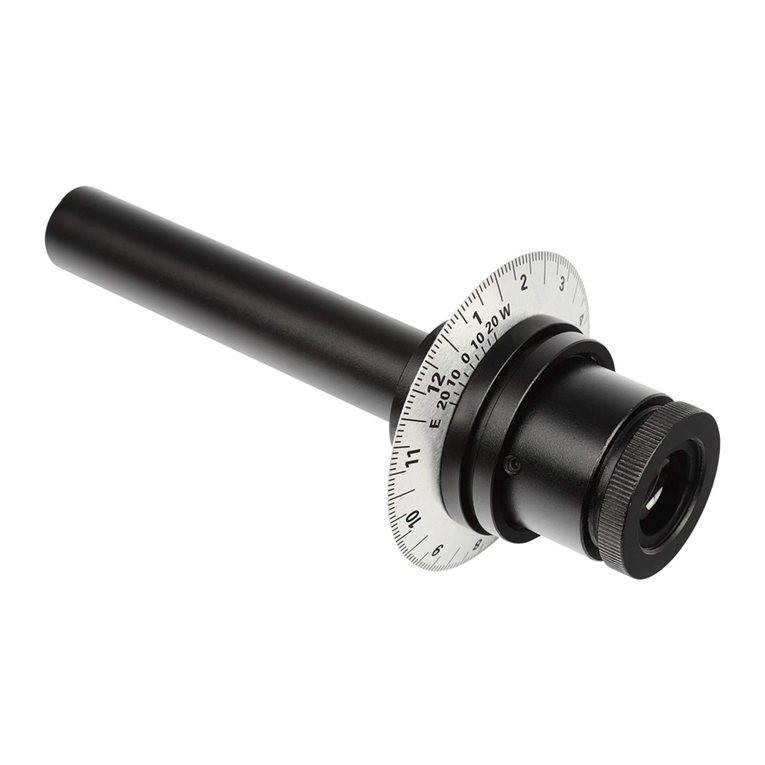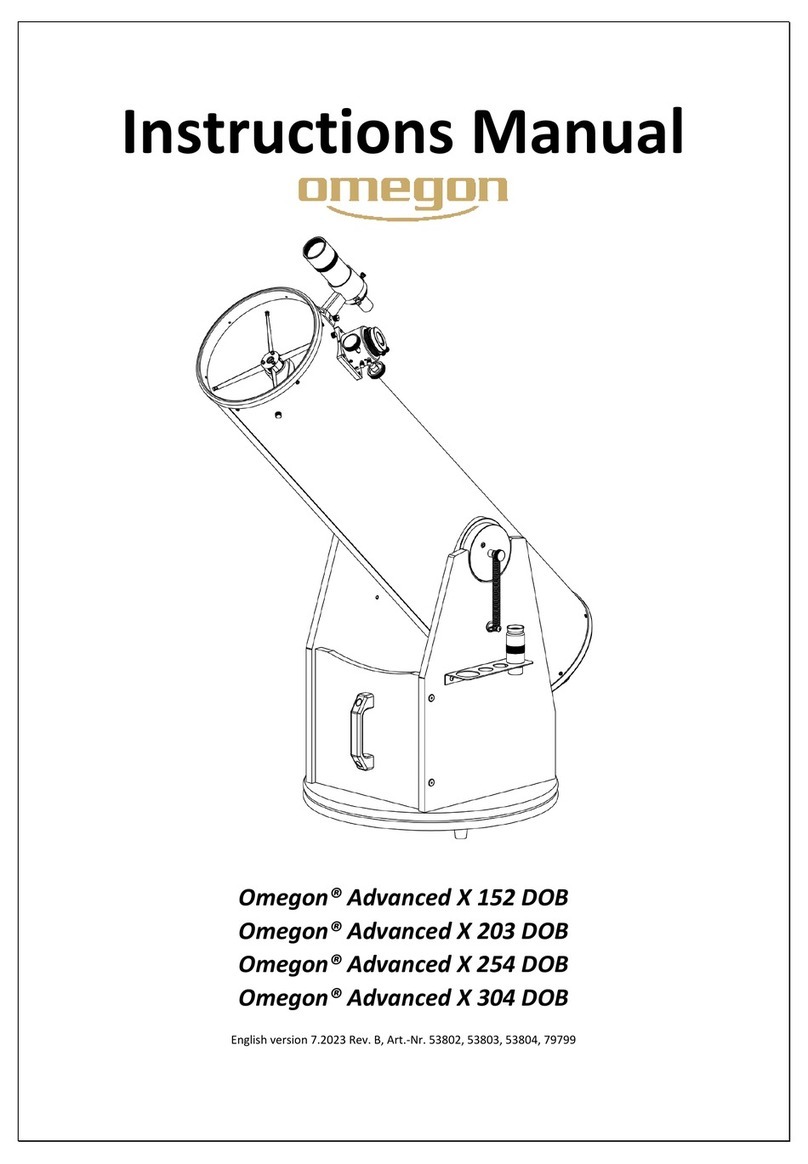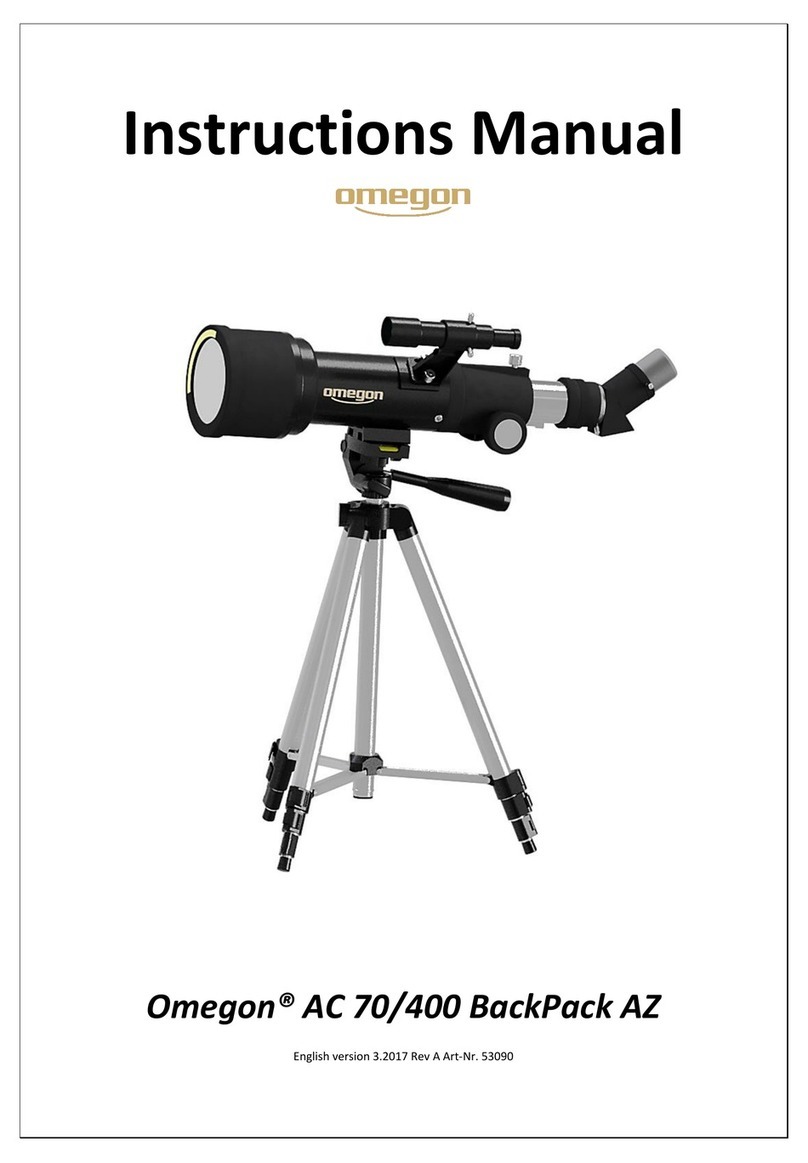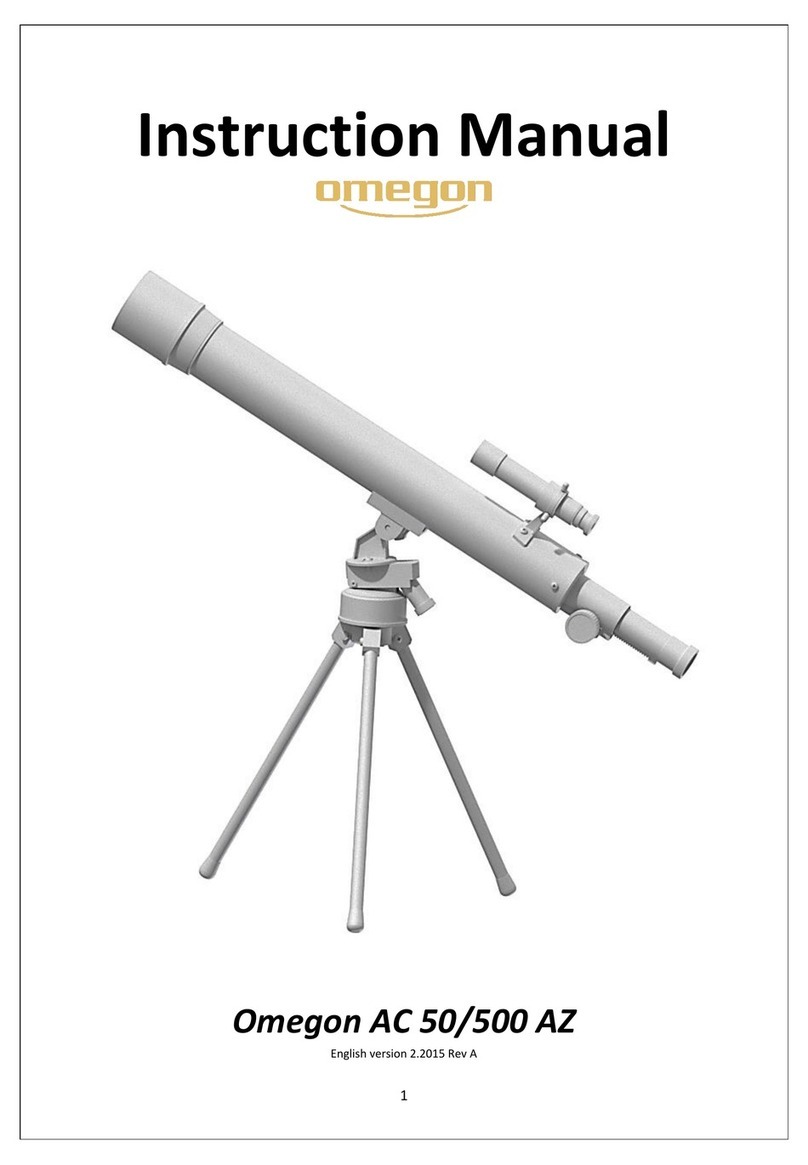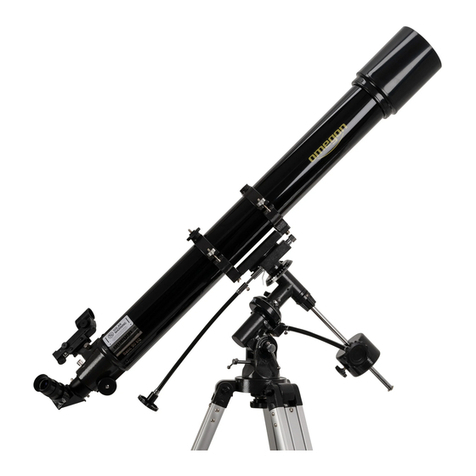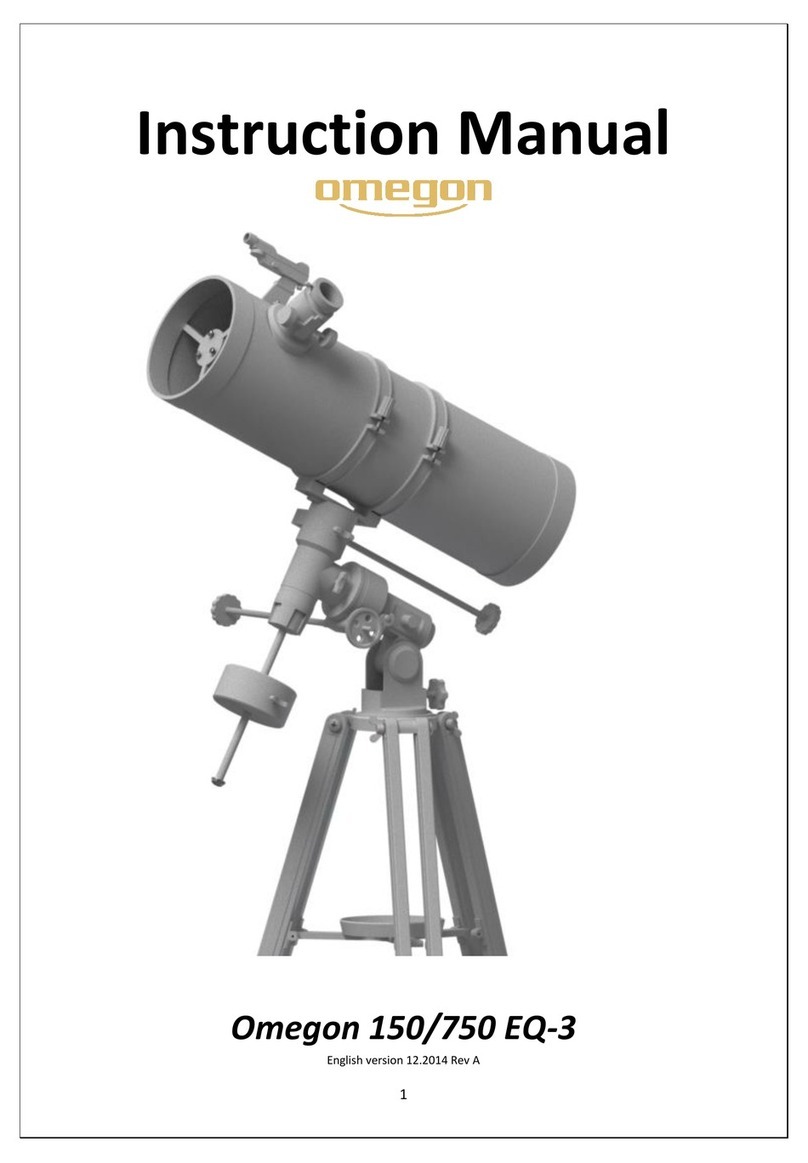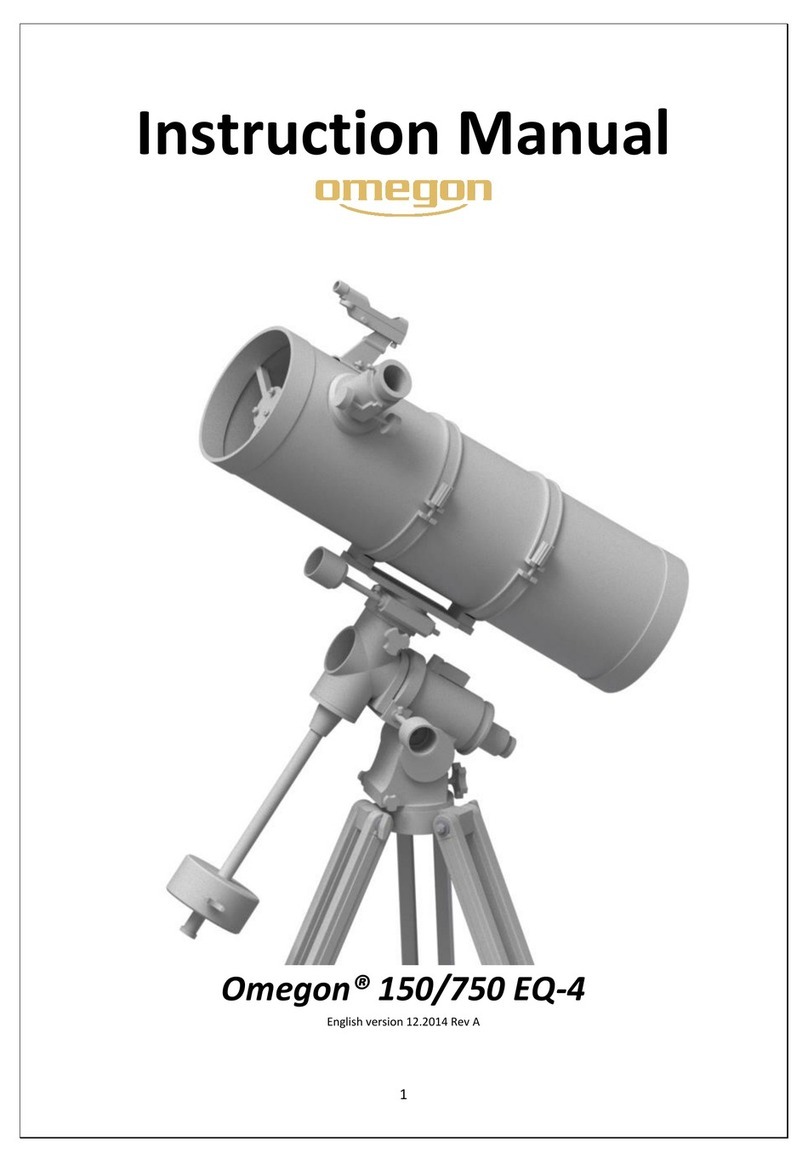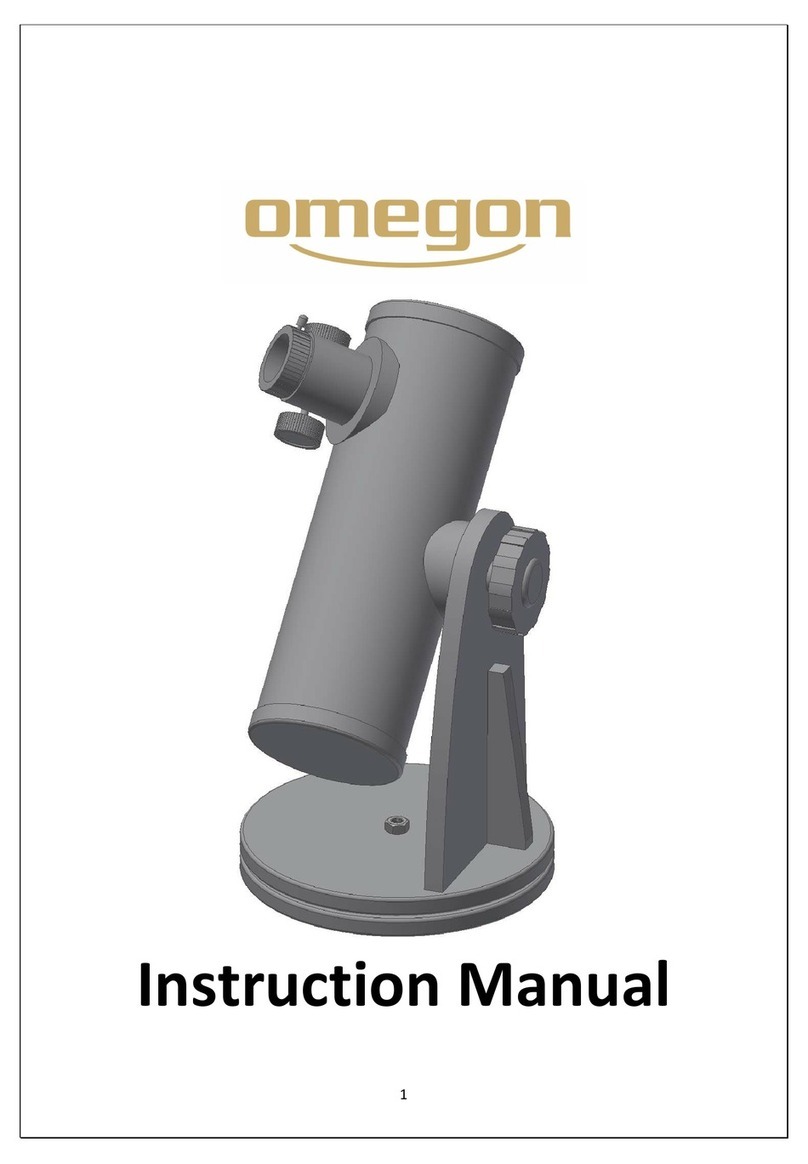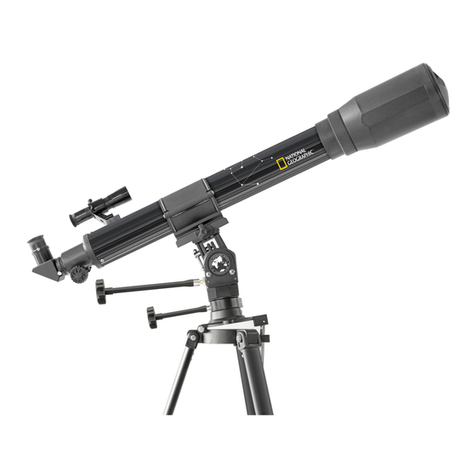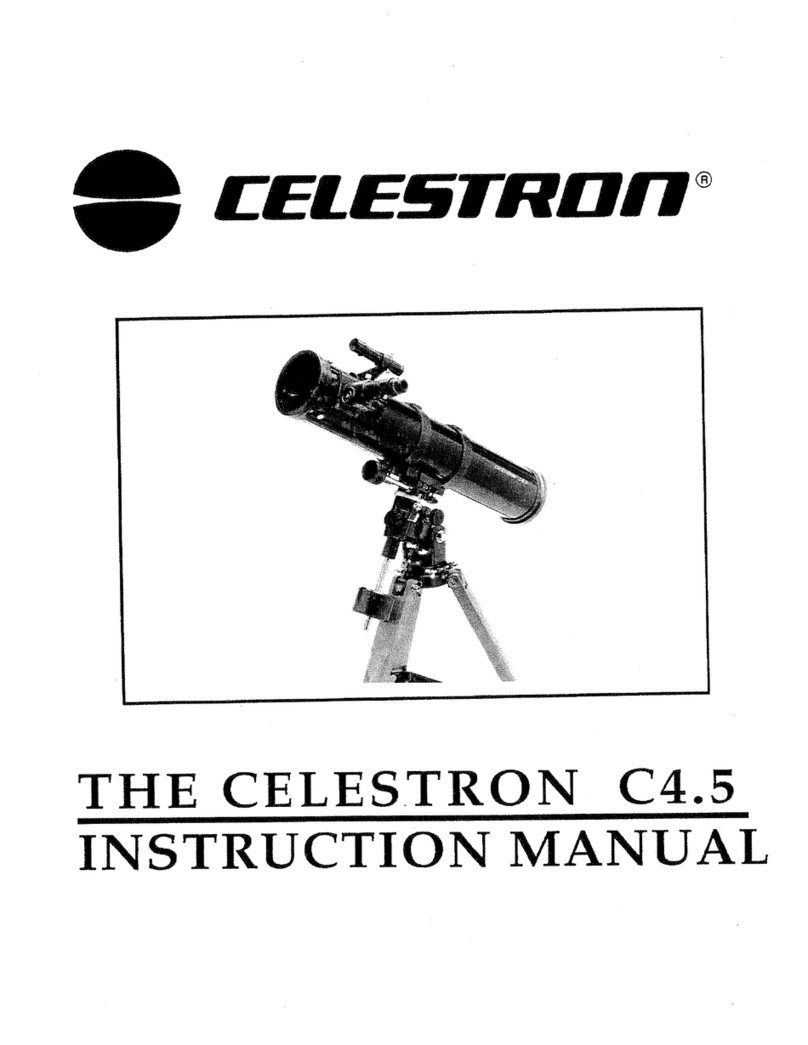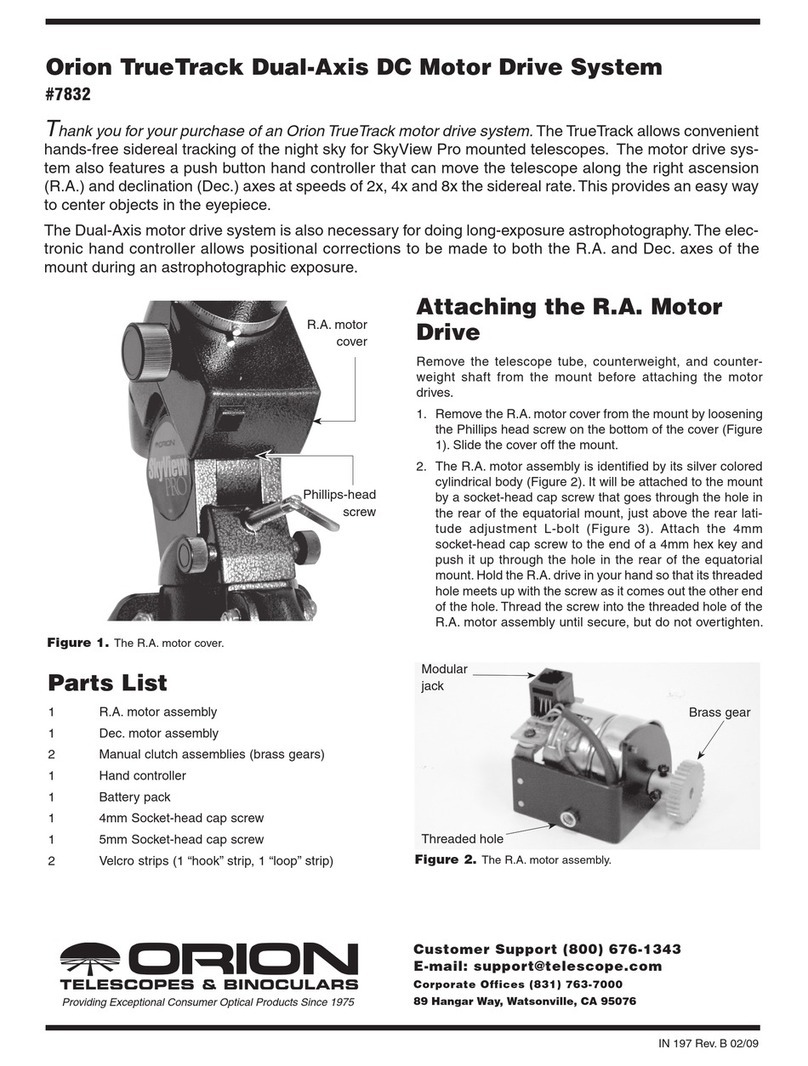Reproduction of part or all of the contents of this document in any form is expressly prohibited other than for individual use only. All text, images and labels are property of Nimax Gmbh.
7. Troubleshooting and frequently asked questions
Q: I can’t focus my telescope, but only get a bright circle.
R: Make sure you have inserted the eyepiece (start by the lowest power eyepiece). Point to a distant
object during the day and proceed as described in 3.
Q: When I use the barlow lens and a 6mm eyepiece, the image is so dark I can hardly see anything.
A: Power should be used with moderation. It depends on how stable the atmosphere is, too much
turbulence causes image distortion. Usually the limit is 2x for each millimeter of the telescope’s
aperture. In this case, the telescope has an aperture of 90mm, so in a very good night you should be
able to reach 180x. The more magnified the image is, the darker it gets.
Q: Is my telescope compatible with other eyepieces?
A: Omegon®telescopes are compatible with all telescope eyepieces from different manufacturers as
long as the eyepiece is a 1.25” (or 31.75mm) size eyepiece. If you would like to test an eyepiece from
a fellow astronomer, go ahead. Different eyepieces provide different visual experiences.
Q: The stars only appear as points in the telescope.
A: Stars will always appear only as points, even in the largest telescopes in the world. It is more
interesting for beginners to observe two-dimensional objects, such as the Moon or planets. Once you
find these, you will be able to start learning about the astronomical calendar.
Q: I would like to observe the Sun.
A: An appropriate solar filter, placed over the objective, is essential for observing the sun. Those are
available as plastic foil or glass filters. They allow only a tiny and harmless fraction of sun light into
the telescope, when securely positioned over the objective, allowing you to observe the sun in
complete safety. Eyepiece solar filters (not available from us) should be avoided at all costs as they
are considered unsafe. Note: Never look directly at the Sun through a telescope without an
objective solar filter!
Q: I can’t see anything, when I look through my telescope.
A: The telescope is only suitable for astronomical observing and when used outside at night.
Observing from inside the house or during the day is usually not possible.
The dust caps must first be removed and an eyepiece must be inserted, before you can start
observing. Are you sure you have removed all the dust caps, not just the small one? If you have not,
then no light will enter the telescope and everything will appear black.
